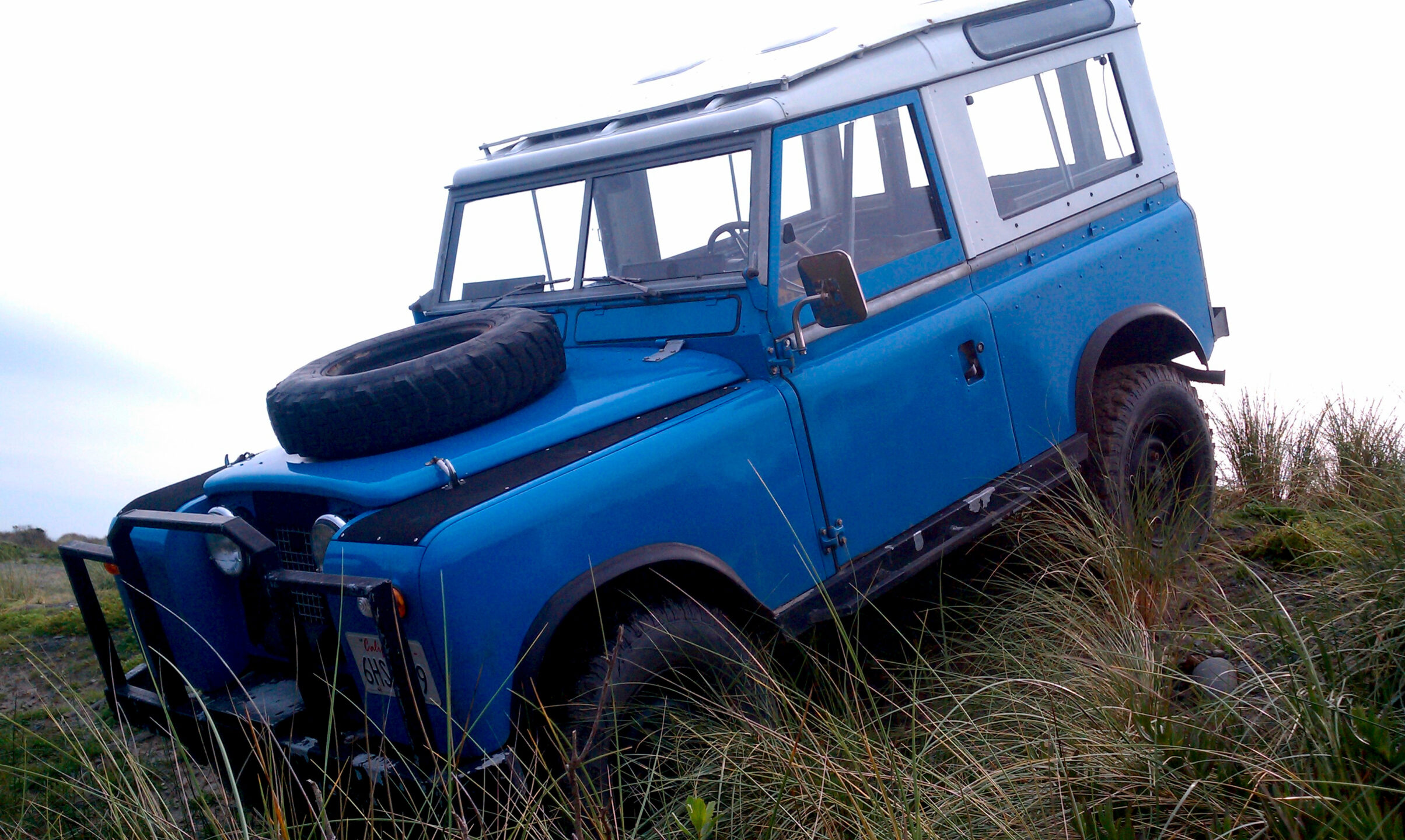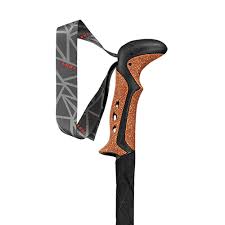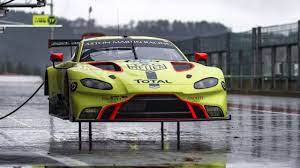The following is essentially a storyboard that demonstrates, in brief, the process that is Earth Centered Engineering applied to the design of an automobile.
In the same way that there are manufacturers of the likes of Pagani or Koenigsegg that create supercars and hypercars that emphasize horsepower, extreme speed, maximum acceleration, and bold aesthetics, we will demonstrate the same level of tenacity here, but in a new way. Instead of focusing on the aforementioned, we will focus on maximum build quality with respect to, serviceability, reusability, recyclability, bio-degradability, supply chain efficiency, and of course aesthetics. All of this combined will create efficiency and therefore maximum waste stream reduction.
This applies to any vehicle drivetrain, be it a fully electric, hybrid, internal combustion engine (I.C.E.) powered vehicle or any other drivetrain. Remember this is a complete re-framing of the way forward, for example; it is easy to think that it is not the seats in your vehicle that are such a problem. But, when put into context it is the fact that every year we are producing and landfilling many millions of seats. Think of what a pile of three-quarters of a million seats looks like. That’s just the annual production of the Ford F-150 pick up truck. That is an enormous toxic waste stream. But, there are ways to shift this, this involves an intersection of materials selection, intelligent design, and excellence in engineering execution.
In a hypercar like version of this vehicle, extensive use of titanium would be the foundation of the vehicle, from body panels to components and even the hardware. For us hypercar means, hyper sustainability. You can gain most of these benefits from extensive use of aluminum, stainless steel, and galvanized steel, in order to bring the package to a affordable and accessible level. So, in this storyboard, there is a bit of an interweaving of both concepts. One being an all out, no holds barred hypercar level of execution, and at the same time, a look at how to gain most of the requirements that meet the standards that we are defining ECE (Earth Centered Engineering) by, but met in a way that is producible in a far more financially accessible platform. But, still nevertheless exceptional.
This particular vehicle we will explore in this storyboard is a concept for a one-vehicle to rule them all configuration. The idea here is that this one platform can serve the needs of most users in most circumstances. It is basically a mid-size truck, with expandability and modularity so it can be at different scales modifiable and adaptable. It can be an open bed or configured as a fully enclosed SUV/crossover type configuration. The only artwork we have is for the open bed truck type configuration. Think of it as an Overlanding vehicle that gets together with a hypercar and the offspring born is the following, but as previously stated the tenacity of execution is directed towards sustainability and not towards power driven speed and performance and lightweight at a spare no expense type execution. When you stop trying to drive 300 mph and divert all that materials science and engineering towards sustainability an entire universe is opened up. One that is practical, accessible, and life-giving as opposed to resource consuming with negligible practicality.


Pictures avaliable

After a lifetime of study and accumulative engineering experience, it has become clear to me that creating sustainable consumer behavior requires having examples of authentically sustainable items around us, for which there are very few when it comes to more complicated and large-scale mechanical construction. The automobile, something so fundamental and profound in its effect on our daily lives, has the capability to influence the will and imagination of people.
Practical vehicles that reflect sustainability can be a part of facilitating a total consciousness shift that the people of earth are in desperate need of.
ON BOARD WHILE YOU DRIVE OIL RECYCLING SYSTEM, WITH PRE-OILING.
A MILLION-MILE OIL CHANGE.
There is actually nothing innately new about this concept, it has been known about for 100 years. It just, unfortunately, has for really no good reason not been implemented and utilized until now.
The onboard oil recycling system is composed of four primary components. The infinitely reusable/cleanable full flow filter and the infinitely reusable/cleanable centrifugal filter do the job of keeping your oil ready to do its job for considerably longer than a standard filtering process. With our system, there is also the pre-oiling accumulator and as well an external pump that operates similarly to a dry-sump system, but in our configuration, it also works in tandem with the wet sump pump that is found on the vast majority of vehicles with I.C.E. .
Centrifugal oil filters are used in many applications and are a commercially available component. The difference here is that with our application we designed the engine around this system and utilize to its fullest potential and as well by making pre-oiling standard to the system we combat the majority of the mechanical wear before it can even happen. Which also takes a significant load off the filtering system.
The Centrifugal Bypass Filter, filters down to 1 micron- in other words, bacterial level filtering going on here. Similar systems have already been used with tremendous success on trains, boats, buses, semi-trucks, and stationary generators. The heart of the system utilizes the physics of centrifugal force to clean the oil of soot and particles far beyond the filtering capability of a standard oil filter. The cleaned oil is continuously, on a separate flow path reintroduced into the engine’s pressurized oiling system.
All of this is done with components that do not need to be disposed of or recycled. Eliminating the waste stream of just the oil filters alone is a saving’s of unimaginable proportions. There are enough oil filters thrown away every year, that if you were to line them all up end to end, the filters would encircle the entire planet at the equator.
Pre-oiling of the I.C.E. is essential in a sustainability model. Save the engine and keep filters from being clogged with abrasive, metallic particles. 75% of engine wear on bearings, pistons, and all other moving components occur when the engine is started cold and has not developed its operating oil pressure. Our pre-oiling system, in just a few seconds, pre-lubricates all the moving components in the engine. The type of particles that are developed by the friction of a non-pre-oiled engine are harmful to the rest of the engine and create a lot of load on the filters. Simple steps in the design and engineering of our proposed vehicle like our On Board Oil Recycling System have a significant cascade effect of massive reductions in waste streams. Which also correlates to significant reduction in CO2 emissions.
The basic elements of this system have been tested and verified by the US-D.O.T. to perform so well that with the occasional addition of TBN (Total Base Number, refers to the alkalizing and detergent/antifriction additive packages in lubrication oils) boosters it is completely feasible to utilize lubrication oils nearly indefinitely.
The system is easy to maintain and anyone that can use the most basic hand tools can easily clean both the full flow and the bypass filter. Which will only need to be cleaned at an interval less than or equivalent to a normal oil change cycle.




Biodegradable materials instead of plastics wherever possible.
Cork, wood, latex rubber, mycelium leather, pineapple leather, linoleum, wool, and other natural materials are more than capable of replacing plastics in body and interior needs, all the while producing tremendously enhanced aesthetics and durability.
Every component that comprises the interior of a vehicle can be manufactured with bio-degradable materials. Instead of using plastic and foam for the interior of vehicles, it can be made from natural materials. Cork is a prime candidate for automotive interior paneling. It is very attractive, soft, provides excellent soundproofing, is very durable, and nearly fireproof, and can easily be made in any color. After the life of a cork panel is expired, it can either be recycled into another cork product or composted. Cork can also be injection molded just like modern plastics, which allow it to be formed into large and complex shapes like dashboards for example.
Just because something is recyclable doesn’t mean it is being recycled. Better to avoid the need for recycling all together
The fact is we are not recycling much more than a small fraction of plastics and other toxic materials that are being utilized for so many things in our lives including our automobiles. We will build our vehicles in a way that forests of cork trees, rubber trees, fields of guayule (another commercially viable source of latex rubber), and industrial hemp and flax can pull CO2 out of the air and sequester it into the components of the vehicle.
Take for example the seating in a modern vehicle reimagined from the point of view of Earth Centered Engineering. Seat coverings in our vehicles can be made from leather, wool, and heavy hemp fabric for example. The seat cushion will be made from latex foam rubber and metal springs. This is how seats used to be made and they are very comfortable and durable. Petroleum-based foam rubber is nowhere near as durable as natural latex rubber. Natural latex rubber seating can provide many decades of usability. Then either ground up and reconstituted to seat cushions again or composted into soil and grown into new rubber-producing crops.
Furthermore, the seats can also be covered with well-made, factory-fit seat covers that can be replaced many times before the actual seat needs to be replaced. Instead of wearing out the critical parts – protect them and keep the primary high-wear components serviceable for as long as possible. A seat engineered from the ground up to be integrated into a seat cover and seat component can be made to appear seamless and be engineered to be simple to install and remove. Washing and maintenance will be greatly simplified and the look aesthetically seamless.
There are many other details that add up to make massive changes in the waste stream equation. Another example is something as simple as a windshield washer fluid reservoir. There have literally been billions of that one particular item ending up in landfills at best and watersheds at the least. Manufacture it out of aluminum and that entire waste stream is averted, and can easily be upcycled to another rebuilt vehicle, eliminating the entire manufacturing aspect. Which when added up equates over time, even something so simple to truly astonishing amounts of waste stream aversion. You create much less CO2 emissions by cleaning something up and reusing it as opposed to manufacturing from the ground up. No mining, no refining, no manufacturing, no toxic plastic, no moving raw materials to one country, then shipping to another for assembly, and so on and so on. Just one small component that no one even thinks twice about is actually responsible for tremendous amounts of pollution when considered at the scale of automotive production.





Dry Sumped Turbo Diesel-Electric Hybrid
The ideal powerplant set-up would be realized by a Boxer layout Turbo Diesel Dry Sumped Engine, working in tandem with a hybrid electric engine and concordant battery pack. The reason for the boxer set-up in this application is due to the spine frame, and packaging requirements of this configuration. Which is discussed in another module of this storyboard.
A modern turbo diesel, like that being developed by Achates Power provides significant reductions in emissions and an equally substantial boost in efficiency. This is the type of out-of-the-box thinking and engineering that culminates in practical and effective solutions to the total waste stream picture. This is coupled with an electric propulsion system that can harness the wasted energy from braking in the form of heat and brake system wear that can instead be captured with regenerative braking. This captured energy can then be used by the electric motor to get the vehicle moving from a dead stop and allow the engine to come on seamlessly to move you along in tandem with the electric motor. This will greatly enhance the efficiency and durability of the drivetrain.
Another critical aspect of the engine build, and as well the rest of the vehicle is to eliminate plastics. It is possible to build an engine that is for the most part free of plastics. Every hose and pipe can be a stainless braided line for example. When the time comes to rebuild the vehicle due to age or salvage, it will be possible to reuse the vast majority of components from the donor vehicle to manufacture another one. Upcycling a vehicle is possible if the initial build quality is high enough.
Built-in efficiency
Doing something as simple as painting the roof white helps keep the cab cooler.
Using a double roof, considerably reduces the heat energy that makes it into the cab, the sun doesn’t shine straight onto the main compartment and the heat energy is reflected away, which helps to keep the cab cooler and the A/C demand low.
Instead of rolling the windows down, you open roof vents and air the vehicle out. This can also be done automatically when the vehicle is not occupied and sitting in the direct sun.
• More comfortable for all passengers.
• Less dependence on A/C.
• Uses less energy.
SHORTER DASHBOARD
A large dashboard becomes a heat sink and radiates the heat throughout the car. A shorter dashboard helps keep the cab cool. Dashboard length tends to be concomitant with the angle of the windscreen. The angle of the windscreen has a significant effect on the aerodynamics of a vehicle. So, a balance must be struck here.
SOLAR POWERED FANS INSIDE THE ROOF
When the cabin reaches a certain temperature the solar-powered fans automatically turn on. Helping to move hot air out of the car while it is sitting.
This helps keep the vehicle cool and minimize the usage of A/C and maintain the interior temperature of the vehicle while parked.
The same solar roof component can also be used to keep your battery charged. Essentially a built-in trickle charger system for battery voltage maintenance.
Keeping the interior from experiencing as many extreme temperature swings helps to save the interior from the wear and tear of heating and cooling cycles.
INTEGRATED WINDSHIELD VISOR
Retractable, convenient screen to shield against the sun. The constant flopping and folding and unfolding of windshield screens is ridiculous. But, the savings of wear and tear on the interior of a vehicle from blocking off the windscreen when parked is essential. Having an integrated and simplified windshield solar reflector is an obvious essential in automotive design. Better yet if it was even a solar charging capable material



Aluminum, stainless steel, titanium or even natural fiber composite body panels
If you make the body of vehicles out of aluminum they will be light weight, and if assembled properly, will not rust or corrode. Carbon fiber, fiberglass, and most other composites are toxic in production and disposal. Steel is heavy and not durable enough. You can recycle aluminum, titanium, and stainless steel nearly indefinitely.
Aluminum and titanium are much lighter than steel, which in turn considerably reduces overall vehicle weight–increasing fuel economy.
The lightweight also delivers much better handling because it reduces the center of gravity. It is possible to construct the body out of stainless steel as well. You gain even more corrosion resistance than aluminum, but you add a lot of weight. The absolute top-tier option would be a titanium body. The low weight of aluminum, with the dent and ding resistance of stainless steel, and complete corrosion resistance.
There are some advancements in composites that could potentially lend to natural fiber body panels being applicable as well. But, for exterior panels the durability is probably not there for the high bar being set here in regards to durability.
Galvanized steel components
Steel components need to be protected from corrosion. Hot dipped Zinc galvanizing is a type of coating that is infinitely stronger and more durable than paint. This is by far the strongest and most cost effective way to protect steel.
By completely submerging steel in a super-heated pool of molten zinc, the substrate material is afforded a significant level of protection from corrosion. Painted steel on the exterior of a vehicle seems last about 10 years. Galvanized steel can endure for up to 50 years. It doesn’t chip or peel or wear off easily. We would mostly be protecting the underbody of the vehicle with this process. Under more extreme conditions like heavily salted roads, the coating durability would, of course, be diminished but compared to paint it is on an entirely another level. If the coating becomes excessively damaged or worn from harsh conditions, then the components can simply be re-galvanized.


4 ft load bed expands to 6 ft

Truncate the bed to make the vehicle as short as possible for increased drivability. But if needed, you can expand the load bed by two feet.
As well, it would be simple enough to engineer a camper top that can expand with the tailgate.
Spine frame & hybrid parallelogram suspension
Solid axle suspension, is very strong and very simple. But, does not provide for a smooth ride quality due to excessive sprung weight. When you run over something with your car, the suspension doesn’t yield to the oncoming force because the axle is so heavy.
We have engineered a new type of parallelogram double A-arm suspension that has never been done before. But, is simple and robust and will yield a phenomenally comfortable ride. Our design will deliver near solid axle strength and suspension travel, with the comfort and road handling ability of fully independent suspension.
The spine frame design allows for innovative cab spatial packaging/configuration. Normally vehicles that do not utilize unibody construction rely on ladder frame design to structurally support the body and drive train components. But it is obtrusive, heavy and inefficient as a supporting member. This will allow the cab to be much more compact and yet not compromise on being able to fit a full-sized adult in a natural and comfortable sitting position.
The spine frame design also allows for the unique packaging of the mechanical elements. The differentials, transmission, and engine become supporting members of the total structure eliminating the weight of the frame and opening up many opportunities for spacial configuration. The spine frame also makes it a straightforward process for one vehicle to be made shorter or longer. The end user can add or take away engineered sections of the spine frame and create either a more compact vehicle or a vehicle with a dedicated full-sized load bed for example and maintain correct proportioning and wheel base to overhang placement.





Front and rear integrated hydraulic jack
Telescopic ram in the front and rear. Push a button
and it lifts the car up so you can change a tire for example.
Already used in race cars
Gas or Diesel/Electric hybrid drivetrain instead of purely electric in some instances is the reality at this time. This will not change anytime soon.
Electric vehicles are fantastic in their own right. But, electric vehicles have their own conundrums in the realm of sustainability, but most significantly purely electric drivetrain-powered vehicles suffer from significant functional liabilities and as well power source charging liabilities. Issues regarding grid charging such as the need for fossil fuel, nuclear and hydroelectric grid-powered supplies of energy. Every bit as important is that there are also many applications where electric propulsion will not fit. Ie. rural applications, heavy towing, and Overlanding/remote travel for example all pose significant challenges for electric only vehicles. As well as has been hopefully clearly demonstrated here modifying a vehicle from I.C.E-based propulsion to electric is only part of a potential path to sustainability. On one hand with an electric vehicle as they are being manufactured now you will often save significantly on tail pipe CO2 emissions. But, the plastics, digital displays, printed circuit boards, and all the rest will still be a waste stream that will be around for many thousands of years, so making that one change is only the beginning of a much larger puzzle.
“We are the only higher thinking technologically capable species that we know of in the universe, and we can no longer afford to create junk.”
Everything we need to build vehicles that are entirely rebuildable and if need be almost completely recyclable, and bio-degradable is available to us now. It is up to us to seize the moment and manifest a new vision of personal transportation and our approach to product design and manufacturing as a whole.
The automobile can be engineered to in and of itself lend its design to upcycling. There is no reason to build every vehicle out of entirely new components. We can take salvaged or worn vehicles and reuse the vast amount of the components that make up the machine to produce new ‘refurbished’ units. All the while engineering them to last a very, very, long time from the get-go. These vehicles can be comfortable, quiet, and aesthetically capturing.
Do you really want the standard plastic offering of vehicles from Tesla, Ford, General Motors, Toyota, or any of the other mass-accessible manufacturers? Or is that just what you are normalized to having to accept? These vehicles and most products are built with intentionally designed engineered obsolescence that are changed every few years for basically no real gain. This process creates a cycle that has the unnecessary effect of making repair and maintenance difficult and requires elaborate retooling at the manufacturing level. Manufacturing in many circumstances creates more waste than any other sector, including CO2 emissions.
A great design is much more timeless. Make every vehicle a true representation of the potential of human craftsmanship. In the long run, a more affordable product that will be accessible to the most amount of people will be created.

